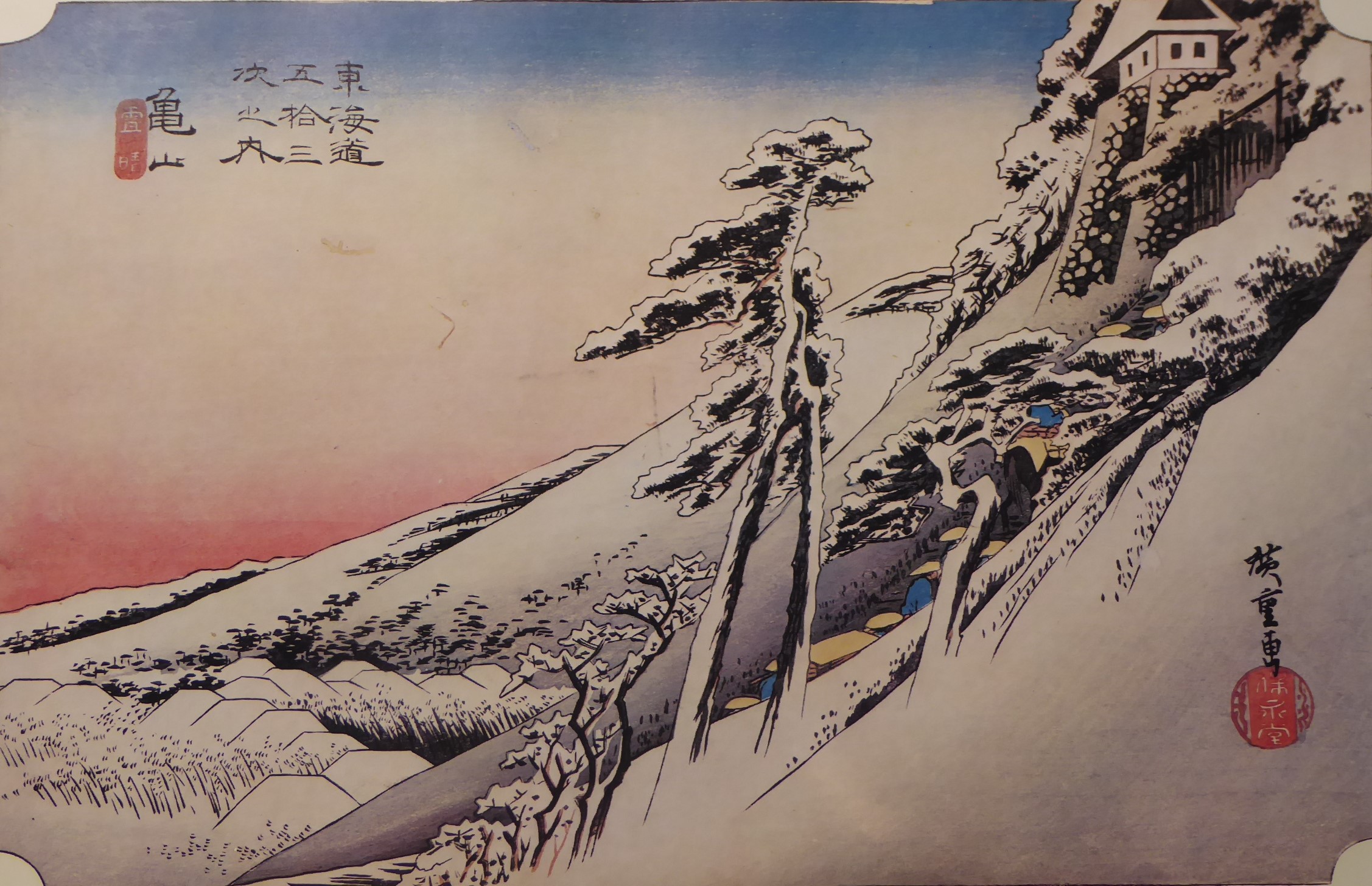Explanation of the Fifty-three Stations of the Tokaido 47 Kameyama
5.9km from Sekijuku to Kameyamajuku, 34°51’17″N, 136°27’16″E
The 46th post station of the Fifty-three Stations of the Tokaido. Currently, it is Kameyama City, Mie Prefecture.
Kameyama, Suzuka County, Ise Province, is also the castle town of the Ise Kameyama Domain, which had a fief of 60,000 koku (during the end of the Edo period). Ise Kameyama Castle is an elegant castle called Kocho Castle.
The existing buildings were demolished at the beginning of the Edo period.
Only the Tamon Tower, which was built as a replacement for the castle tower, remains, and the castle tower base and the restored Ninomaru Belt Kuruwa are designated as historic sites.
The Ise Kameyama Domain was ruled by the feudal lords of the Tokugawa family, and was used as a lodging place when the Tokugawa family went to Kyoto.
It is said that feudal lords on their way to Kyoto refrained from staying at Kameyama-juku.
At the end of the Edo period, the area of about 2.5 km from the ruins of Roshin’an in the east to the Kyoguchi gate of Kameyama Castle in the west was the post town of Kameyama.
As the number of travelers increased, town houses spread outward from the Edoguchi, forming Higashi-Shinmachi and Honmachi, and at the easternmost end, Chayamachi, an entertainment district, was established.
The road from the Edoguchi to the Kyoguchi is lined with many winding, complex roads and slopes that are difficult to see through, creating a streetscape that is characteristic of a castle town.
It was built in 1673 by Itakura Shigetsune, lord of Kameyama Castle. It is 120m east to west and 70m north to south, and has moats on the north and east sides.
It forms a bailey surrounded by earthen ramparts and earthen walls, and a single flat tower was built at the eastern end.
The bailey is divided into three sections, each with a siege.
Laborers were assigned to the villages within the domain according to their rice yield, and a total of 20,000 people were mobilized for its construction. A guard post was set up in the western section to watch over and guard passers-by.
① “Hoeido version”
This is a representative snow scene from Ando Hiroshige’s Fifty-three Stations of the Tokaido, second only to “Kambara”.
A bold composition that divides the screen in two diagonally.
The left side of the screen expresses the clear air of a winter morning without a speck of dust amid the glow of dawn.
The upper right side shows the entrance to Kameyama-juku, with the Kyoguchi Gate built on a cliff.
A feudal lord’s procession is depicted climbing a steep slope toward the Kyoguchi Gate.
The snow scene is depicted in black and white.
The colors applied to the sky and the people in the procession give the screen life.
The snow that has fallen on the mountain slope sparkles in the sunlight.
The feudal lord’s procession continues, peeking in and out between the pines.
② “Gyosho version”
This is a scene in which porters carrying heavy luggage are resting in the shade of a row of pine trees.
As they are supporting their loads with their walking sticks, it seems that they are preparing to depart.
Next, they synchronize their movements and place their loads on their shoulders.
③ “Reisyo version”
The moat is drawn to the right, but the content seems a little lonely.
This may be a consideration to make the castle appear larger.
④ “Hokusai version”
This is thought to be a scene of a break at a teahouse.
⑤ “Travel image”
I couldn’t find a good image. This is an image of the Shin-Tomei Expressway under construction.
⑥ “Stamp image”
A stamp at Kameyama Station.
Hoeido version
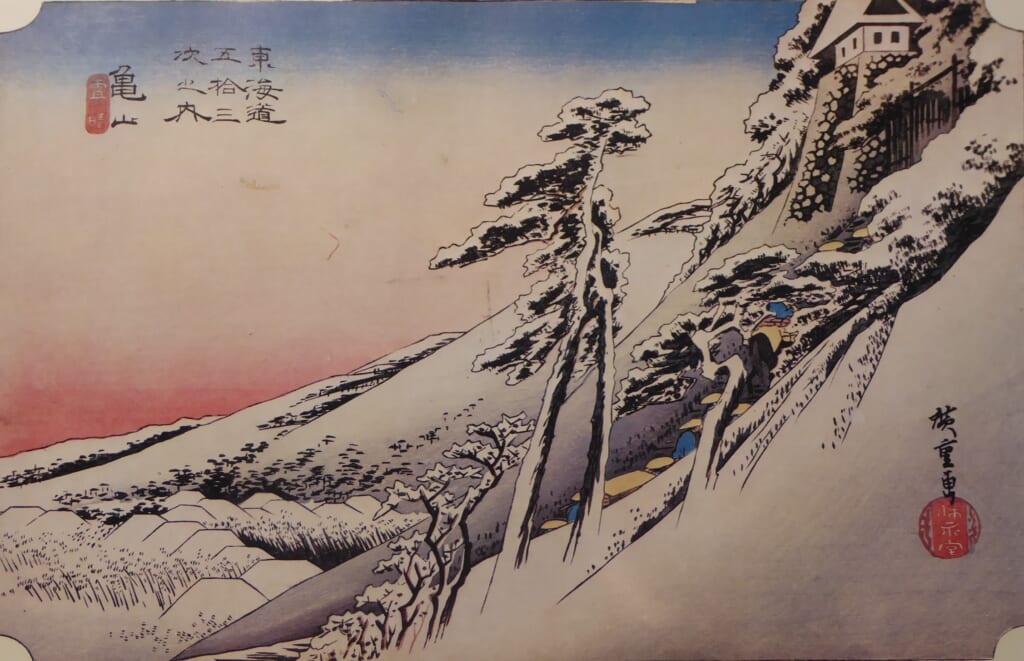
Gyosho version
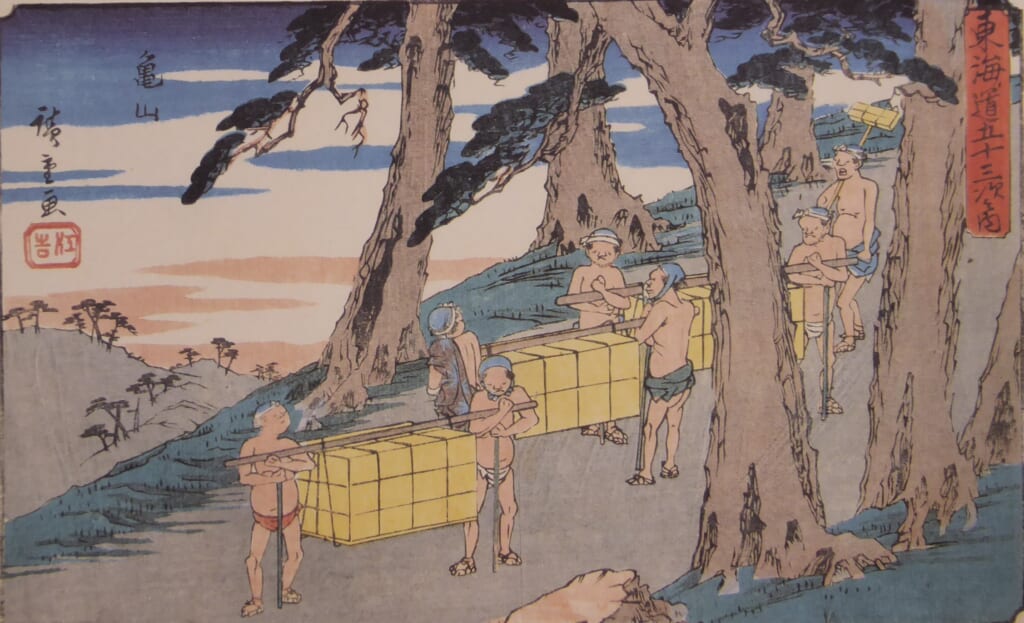
Reisyo version
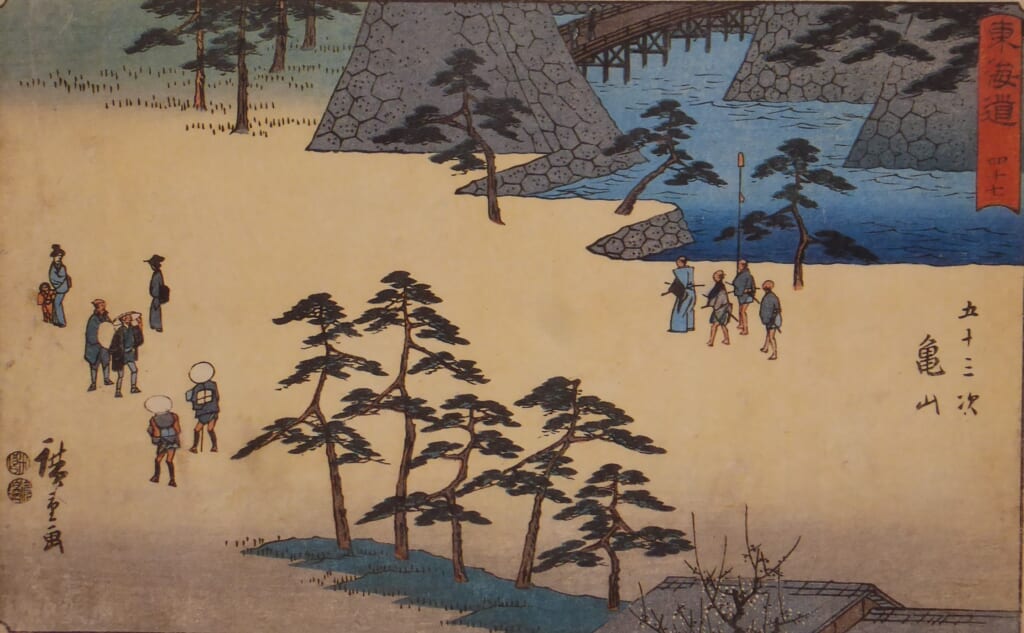
Hokusai version

Travel image
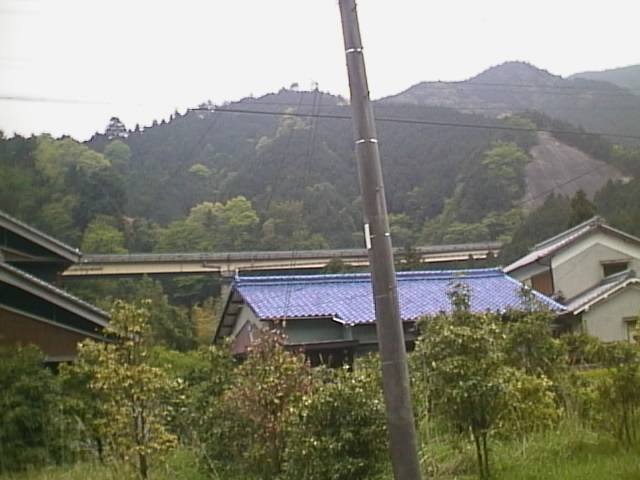
Stamp image

